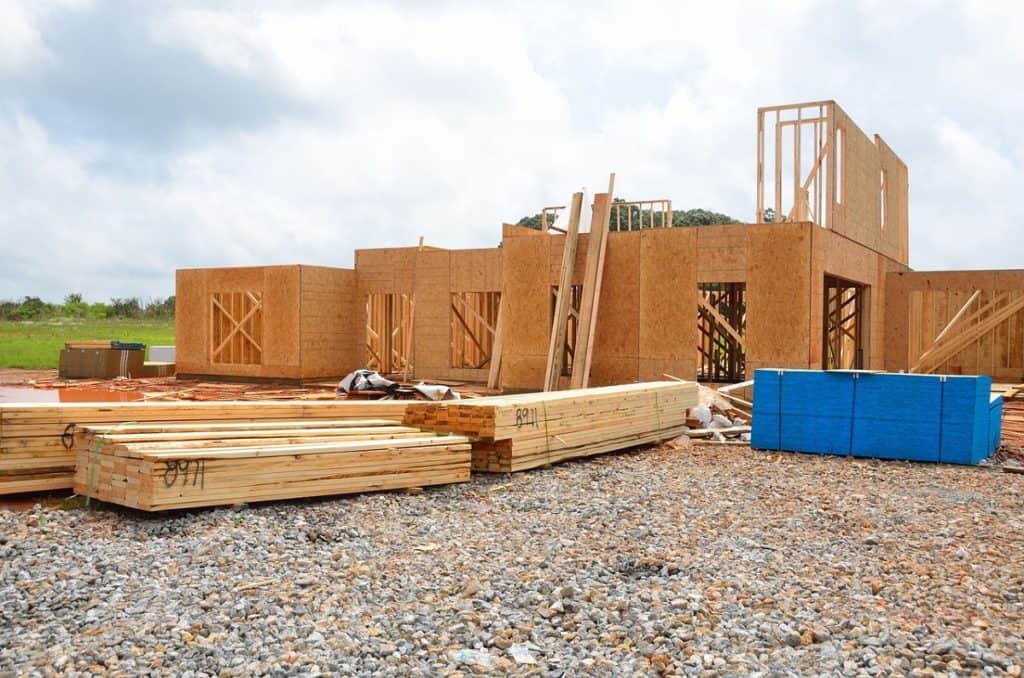Good construction starts with a solid foundation. That’s true of the work itself, but also the planning that goes into any construction job.
The planning period of construction is known as pre-construction, and sounds planning will be imperative to the success of the finished project. There are many pre-construction planning stages that a contractor will need to work through to ensure that a project goes smoothly. The point of pre-construction planning is to think of everything, including the pre-construction costs and pre-construction services, then go over it again.
The pre-construction checklist should include every possible scenario and contingency that the team may encounter during a project. This plan is formed through a mix of expertise and experience, but the final plan will be completely unique to the specific job.
To take the guesswork out of what is happening behind the scenes during this pre-construction phase, here is a quick primer on the many pre-construction planning stages.
Table of Contents
The Planning Stages of Pre-construction
First, we should note that the following stages are not necessarily in any kind of order. All of them happen fairly simultaneously unless otherwise noted, but are all important cogs in the wheel to make the whole project roll along cohesively.
Of course, now that we say that, the first step is ALWAYS the one that will happen first.
Initial Meeting Between Client & Contractor
It all starts with an initial meeting. The contractor will meet face-to-face with the owner or client to go over their goals for the construction project. An initial budget will likely be discussed as well as when the client hopes the job will be completed.
The initial meeting is more about learning the client’s vision for the project than discussing any hard details. The contractor will then take all of the information he or she gathers at this meeting and start to put together the rest of the pre-construction plan. The contractor and client will stay closely tied at the hip during the entire process and have many follow-up meetings to stay updated and make changes.
Define the Objectives of the Project
During the initial stage of pre-construction planning, you will outline the overall project. This will include looking over blueprints and architectural designs, as well as the big picture goals of the client. The client should submit any questions they have to the contractor during this time, including any issues with the planning, placement, or design that the client thinks may become a problem during construction.
This evaluation will lay the groundwork for the rest of the pre-construction planning process. Knowledgeable contractors will have all the answers a client needs and should be able to determine if the client’s vision is feasible for construction in the intended location.
From here, the contractor will move on to the main three objectives of the pre-construction planning process: the scope of work, setting a budget, and creating a schedule.

The Scope, Schedule & Budget
A Detailed Project Scope
To better envision the client’s objectives and get on the same page for the big picture of the project, the greater scope will need to be understood.
The “scope” of a construction project is essentially a description of the work that will be performed during the construction job. The contractor will need to outline the scope from start to finish, and determine what types of workers are needed for each phase, as well as what equipment and materials will be required to complete the job. Combined, all of these elements will form the overall scope of the project.
This is perhaps the single most important part of the pre-construction planning process, as it will act as a roadmap for the entire job. The scope will go from a broad outline to a step-by-step definition of each item that needs to be checked to reach the project goal. It should be clearly described for the client to understand and will need to be agreed upon by all stakeholders involved in the process.
Setting a Budget
Every construction project will begin with an initial budget or a price that the client had in mind to spend on a given project. However, this number is typically uninformed and with no consideration given to how much a construction project costs.
Often, this is simply the initial number that a client has to spend on the project. The contractor can attempt to see if the project is feasible within this budget, or make suggestions to either change the project within those confines or stretch the budget to accommodate the client’s goals.
The budget is a vital component of realizing the actual project scope and will help determine what materials are needed, what subcontractors will need to be hired, as well as the site for construction. The early budget estimates will be rather fluid, as contractor and client work together to reach an agreement on price and goals for the construction.
The budget should not be aspirational, rather based on previous experience with similar jobs as well as an in-depth knowledge of what certain materials and components will cost. During this budget-setting period, the contractor will look into potential issues that may arise, and come up with contingencies in the budget to cover them. They will also search for opportunities to save money in every part of the job.
The contractor will create this budget and evaluate savings opportunities using two tools of the trade: cost estimating and value engineering/optimization.
- Cost Estimating – early cost estimates will be important to create an accurate budget for the project. Realistic budgeting based on facts instead of feelings will accurately document these cost estimates, which can help the client maximize their budget. These cost estimates will be provided up front during the pre-construction planning stage, as well as during design development and the construction document stages should there be any changes. However, the initial budget should have built in contingencies to prepare for any of those changes that do happen to occur
- Value Optimization – during this stage of pre-construction, the contractor will look to not only cut costs, but also improve the overall value of the project. They will need an understanding of what the client considers “valuable” to reach these conclusions, as well as have a firm grasp on value engineering. This value optimization is most effective early in the planning of a construction project when the team can look into the scope of the project and find opportunities for both cost savings and value improvement, whether that be via life-cycle cost analysis or using more sustainable materials and efficient LEED components.
A common unfortunate pitfall for construction projects is to go over budget, but careful evaluation during the pre-construction planning process can help to avoid this problem. The team should continue to review the estimates and make adjustments throughout the project so everyone is aware of any budget changes. With a sound plan in place, none of these changes will put costs far beyond the original budget.
Setting a Schedule
The schedule of a construction project will be another vital component of the pre-construction planning stages. High on the pre-construction checklist will be the due date for when the project needs to be done. Perhaps the client has a hard end date that they absolutely need the job done, while others may be more flexible.
Knowing ahead of time can make all the difference, and staying on task with a clearly outlined schedule will ensure all contractors and subcontractors are held accountable for their portion of the job. To keep things moving toward the goal, an initial schedule will be created.
Key milestones will be outlined in this early schedule, and the team will form start and finish dates for each different portion of the project to see that it is finished in its entirety by the given date. With so many moving parts, it is a big help to have everyone working together along the same timeline.
From this early baseline, subcontractor input will be given to see what is feasible, and tweaks will be made to the initial schedule. Everyone involved in the project will need to add their input to avoid falling behind schedule. The tasks, milestones, and completion dates will need to be agreed upon, and all responsibilities will need to be clearly defined.
It’s often a good idea to build check-in dates into the schedule to keep the client updated on progress and adjust any scheduling issues. Staying ahead of problems in the timeline allows for things to move around more easily.
The scope, budget, and schedule are the main three elements of pre-construction planning that will drive a construction project. At times, one component may cause certain decisions to be made more than another, but overall they should all be developed in unison to have a more cohesive project.
The construction team will encounter scenarios that may challenge the budget or timeline during construction, but contingencies will be in place to handle them. This pre-construction phase enables wiggle room for things to happen, and it is likely that something will, but good preparation means that it likely won’t set the project back too far.
By anticipating problems, the scope, budget, and schedule will likely stay close to its original plan throughout the project. They will be sufficiently detailed and correspond with each other to make the project move smoothly. An item in the schedule will have a corresponding budget value that will be factored into the overall scope.
There are other key items that fall under this trio of pre-construction planning stages that will require special attention from the construction team.
The Initial Schematic Design
Sometimes created during the initial evaluation, the schematic design will serve as the first visual to the client and will be what the rest of the project is drawn from. The client will offer feedback and other circumstances will force changes to be made, but it is likely that this initial schematic will help to form the final product.
Analysis of the Construction Site
Construction can’t move forward if the site is found to be unsuitable for the client’s goals. The contractor will visit the site to look into its’ feasibility and see whether or not the work required can be done on site. This will include an evaluation of the site’s soil to ensure it can provide a solid foundation, as well as keeping in mind things like traffic flow, parking, landscaping, capacity, and more.
The contractor will take this information back to the client to offer suggestions on how to make the site work, otherwise, a new site will have to be found.
Procurement Management
An often-overlooked part of pre-construction is long lead times. This refers to when a material may take a long time to acquire. Careful pre-planning will build this lead time into the schedule so no time is lost waiting for it to arrive. Other aspects of the job can continue while the material is on its way and senseless delays can be easily avoided.
Acquiring the Proper Approvals
Naturally, every construction job requires the proper approvals and building permits before it can move forward. These are items that should be acquired by the contractor during the pre-construction phase to ensure that construction can move forward. Once this phase is completed, your project will move to the building stage, and eventually post-construction. Read more in our related article about the post-construction phase and what to expect.
Summary
The better prepared a team is for certain scenarios, the more likely the job is to get done on budget, and on time. Good pre-construction planning is vital to ensuring this occurs. Contact us or schedule a demo for more information.
Sources:
https://www.therossgrp.com/blog/how-to-outline-the-scope-of-work-for-your-next-construction-project
https://www.proformaco.com/pre-construction-phase-design-development/
https://joeris.com/services/preconstruction/preconstruction-process/

